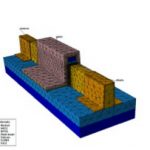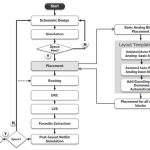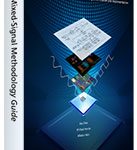It appears so. Why there is so much rush towards FD-SOI in recent days? Before talking about the game, let me reflect a bit on the FD-SOI technology first. The FD-SOI at 28nm claims to be the most power-efficient and lesser cost technology compared to any other technology available at that node. There are many other advantages from… Read More
Tag: analog
The Transistor is the Foundation of TCAD to Signoff
At the most basic level, semiconductor design is all about transistors. Any report on a large microprocessor or mobile application processor is in awe about how many transistors it contains. Moore’s Law is all about the most economic way to manufacture transistors. Each process generation for the last decade and looking ahead… Read More
Analog Market Leaders Eyeing on IoT Applications
When we talk about analog IC market, one can easily guess who the leader with lion’s share in the market is. There are also next level leaders with impressive growth rates in this market. The analog market as such is poised to grow with Internet of Things (IoT) because it supplies some of the key components such as data converters, op… Read More
Can You Really Automate Analog IC Layout?
Digital IC design has been largely automated with high-level languages, RTL coding, logic synthesis, and automated place and route tools. What about analog IC layout automation, is it possible? A few EDA companies think that it is possible and even practical. In recent memory there were two companies really focused on analog … Read More
SEMI Wafers to Wallstreet – New England Forum March 12, 2015
On March 12 SEMI held a New England Forum breakfast event entitled “Wafers to Wallstreet” with four speakers. The main focus of the discussion was on the “Internet of Things” and the following are my impression from the talks in a bullet point format.
Device Scaling and Performance in the Era of IoT – Gary Rosen, Applied Materials… Read More
Inside tips on Tanner L-Edit toolbox
Advanced skill in auto repair, carpentry, plumbing, and similar trades often correlates to one factor. Knowing what you want to do is one thing – having the proper tool is another, and can make the difference. Many a job has extended from minutes to hours over the lack of the right tool at the right moment. Experienced mechanics and… Read More
Methodology Help for Analog IC Designers
Digital designers are more numerous than analog IC designers, and so they tend to get more attention from EDA vendors in terms of tools and automation methodologies. For an analog design team with specialists focused separately on schematics and layout there are several methodology questions that need to be addressed, like:… Read More
Coverage Driven Analog Verification
Ad hoc digital design verification approaches ran out of steam at least a decade ago when designs got intractably large to make it feasible to keep track of everything with pen and paper and excel. But analog design has remained largely ad hoc to this day. The designer runs spice, looks at the waveforms that come out and decide whether… Read More
Adding a Digital Block to an Analog Design
My engineering background includes designing at the transistor-level, so I was drawn to attend a webinar today presented by Tanner EDAand Incentia about Adding a Digital Block to an Analog Design. Many of the 30,000 users of Tanner tools have been doing AMS designs, so adding logic synthesis and static timing analysis from Incentia… Read More
Cadence Mixed Signal Technology Forum
Yesterday was Cadence’s annual mixed-signal technology forum. I think that there was a definite theme running through many of the presentations, namely that wireless communication of one kind or another is on a sharp rise with more and more devices needing to connect to WiFi, Bluetooth and so on. This was most obvious during… Read More







